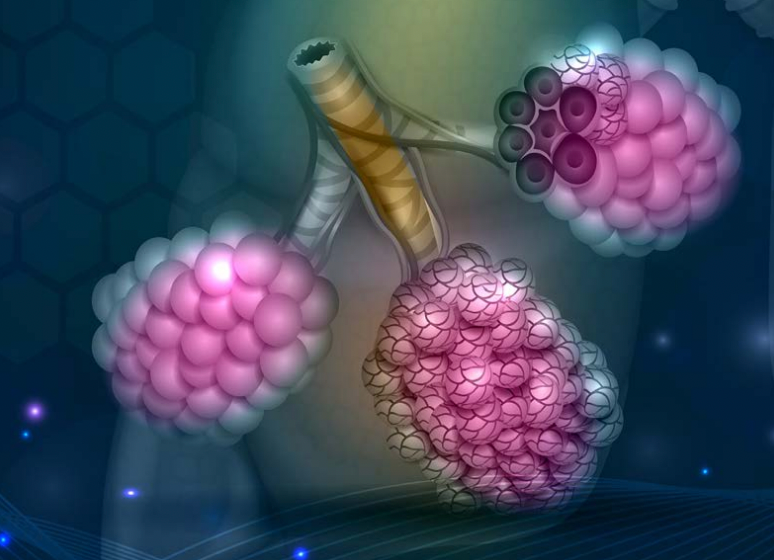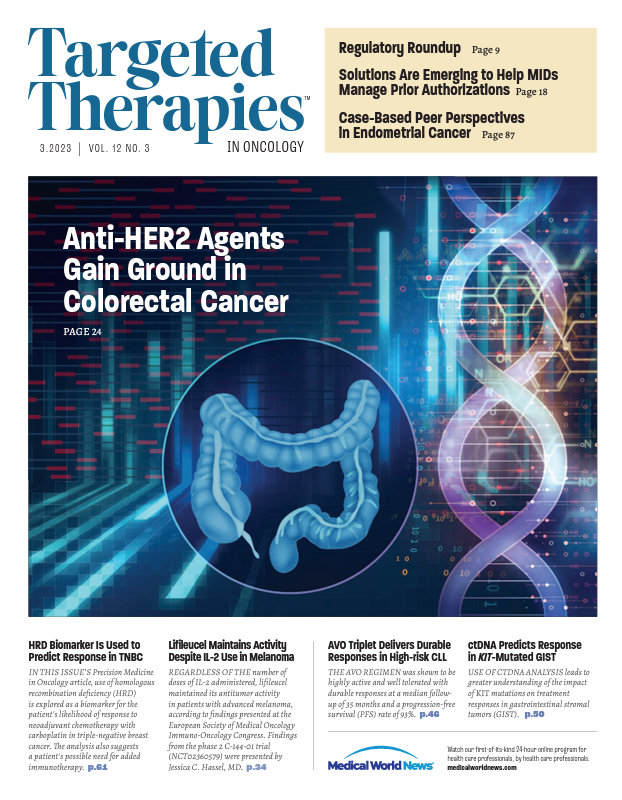Streamlining NGS Testing Process Improves Turnaround Time in NSCLC
Delivering cancer care from the first diagnosis is a team approach. Each step affects downstream processes.

A major challenge associated with next-generation sequencing (NGS) is receiving molecular testing results in time to make treatment decisions, especially in patients with advanced lung cancer. An intervention to improve turnaround time resulted in a reduction in the median time from pathologic diagnosis to results from 24 days (SD, 9) to 16 days (SD, 6; P = .001). Moreover, investigators reported improvements in the time to receive other clinical results, including time to obtain biopsy results, the time from a specimen being sent to pathology to the NGS vendor, and the total time from pathologic diagnosis to appropriate treatment.1
“Molecular testing requires bringing the clinical team together to work on improvement,” Raymond Liu, MD, said during an interview with Targeted Therapies in Oncology™. “Testing is a multistep process and it’s important in a community oncology practice to work with internal and external stakeholders,” Liu, director of research, hematology-oncology, The Permanente Medical Group, and medical director, Kaiser San Francisco Cancer Center, said.
Investigators reviewed electronic medical records of 42 patients at Kaiser Permanente San Francisco (KPSF) with newly diagnosed, untreated metastatic non–small cell lung cancer (NSCLC) to determine number of days from pathologic diagnosis to NGS results as part of the American Society of Clinical Oncology (ASCO) Quality Training Program. KPSF is part of a large integrated delivery system of 21 cancer centers over a broad geographic area in northern California that serves 4.5 million individuals.
They identified staţeholders including pathologists, medical oncologists, research partners, technology leaders, and NGS tissue vendors to review process maps and determine factors leading to preventable delays.
After reviewing the process of ordering NGS tests, the investigators discovered numerous interdepartmental handoffs that could lead to potential bottlenecks. They noted that oncologists did not routinely access pathology results or order tissue NGS testing until the time of their first visit with the patient. When NGS testing was ordered, the local and regional pathology departments processed the specimen sequentially, compared with the Kaiser Permanente Division of Research, which reviewed the orders and contacted the NGS vendor. The pathology department completed its review and sent the specimen to the out-of-state NGS vendor, which only accepted samples 4 days of the week.1
Reviewing these processes led the investigators to identify 3 factors that could reduce turnaround time.
“We realized that by the time the physician saw the patient in the clinic, we were already behind on NGS test ordering,” said Liu, who is also an assistant clinical professor, faiser Permanente Bernard J. Tyson School of Medicine, Pasadena, California. To address this delay, an electronic medical report was created so that oncologists could review the pathology report before the patient showed up for their appointment. This factor was the main intervention to reduce turnaround time, Liu said.
The second factor involved PD-L1 testing. Investigators noted that the NGS vendor was not able to conduct PD-L1 biomarţer testing, resulting in the NGS testing and PD-L1 testing undergoing separate ordering processes. Findings from one could delay the other. “We prioritized our NGS samples to make sure we could get all the results back in a timely fashion,” Liu said.
The third factor involved understanding the vendorܼs internal process for sample intake. ܹ"We didnܼt anticipate learning that the vendor did not accept samples every day of the week," Liu said. ܹ"If a sample arrived on Friday, intake procedures did not occur until the following week. We met with the vendor and explained the need for samples to be processed all the days of the week." After the meeting, the vendor changed intake policies, resulting in reduced turnaround time.
Addressing these factors resulted in signifi cant improvement in turnaround time. The development and use of an electronic medical report led to reduction in median time from biopsy results to NGS order, from 7 days to 1 day.1
The mean time from diagnosis to NGS results improved from 27 to 17 days after the vendor started accepting specimens every day. The total time from pathologic diagnosis to appropriate treatment was reduced from a median of 33 to 22 days. For patients receiving targeted therapies, the median time to targeted therapy from biopsy results decreased from 28 to 22 days.1
The investigators emphasized that these results could be generalizable to other health care institutions, especially those using an electronic pathology database or those worţing with external vendors for NGS testing. Streamlining the process can lead to faster results and potentially reduce time to first appropriate systemic treatment, according to investigators.
Delivering cancer care from the first diagnosis is a team approach. Each step affects downstream processes. “Working together with the external vendor in a collaborative fashion to identify the challenges, to identify the high priorities that need to be fixed, makes the outcome better for the patient and for [the] whole team,” Liu said.
REFERENCE
1. Ossowski S, Neeman E, Borden C, et al. Improving time to molecular testing results in patients with newly diagnosed, metastatic non-small-cell lung cancer. JCO Oncol Pract. 2022;18(11):e1874-e1884. doi:10.1200/OP.22.00260

Survivorship Care Promotes Evidence-Based Approaches for Quality of Life and Beyond
March 21st 2025Frank J. Penedo, PhD, explains the challenges of survivorship care for patients with cancer and how he implements programs to support patients’ emotional, physical, and practical needs.
Read More